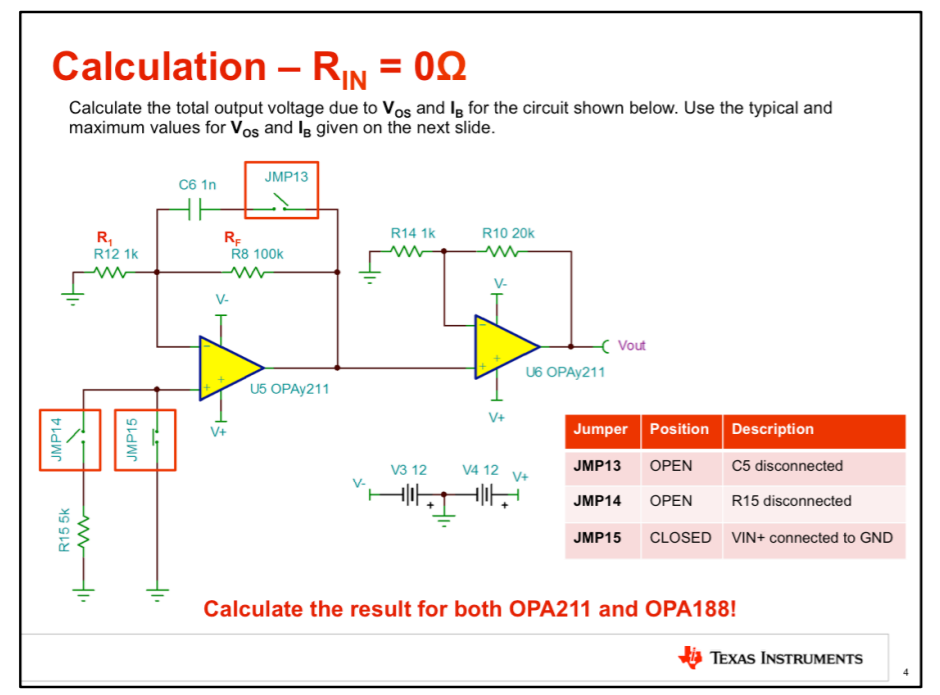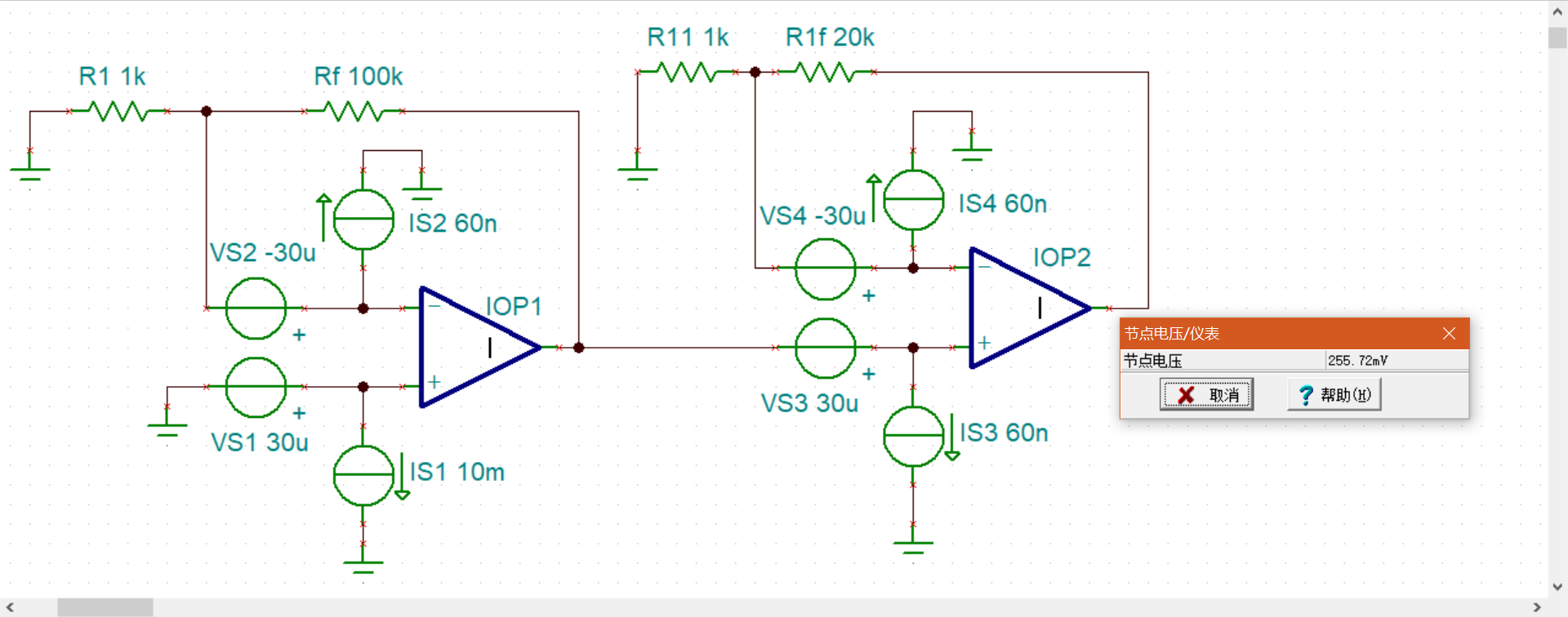Other Parts Discussed in Thread: TINA-TI
When i learn the OPA input offset voltage and bias current at TI precision LAB:
video: https://training.ti.com/ti-precision-labs-op-amps-vos-and-ib-lab?cu=14685
PDF: https://training.ti.com/system/files/docs/1100-L%20-%20Vos%20and%20Ib%20-%20Lab%20-%20slides_0.pdf
They calculated the gain of OPA by its equal resistor in page 4-6 at PDF and 01:45-03:52 int the video.
Fig 1 is the topology of circuit, and Fig 2 is the simulation with ideal device and using current and voltage source replace the bias current and offset voltage by me in TINA-TI.
FIG2 ↑↑(IS1 should be 60nA and I also simulated with right IS1, and the result is same to the old one)
And also the result I calculated with pencil is equal to my simulation, so I wonder WHY the video using equal resistor and ignored the second OPA's offset voltage and bias current?
Thanks!





